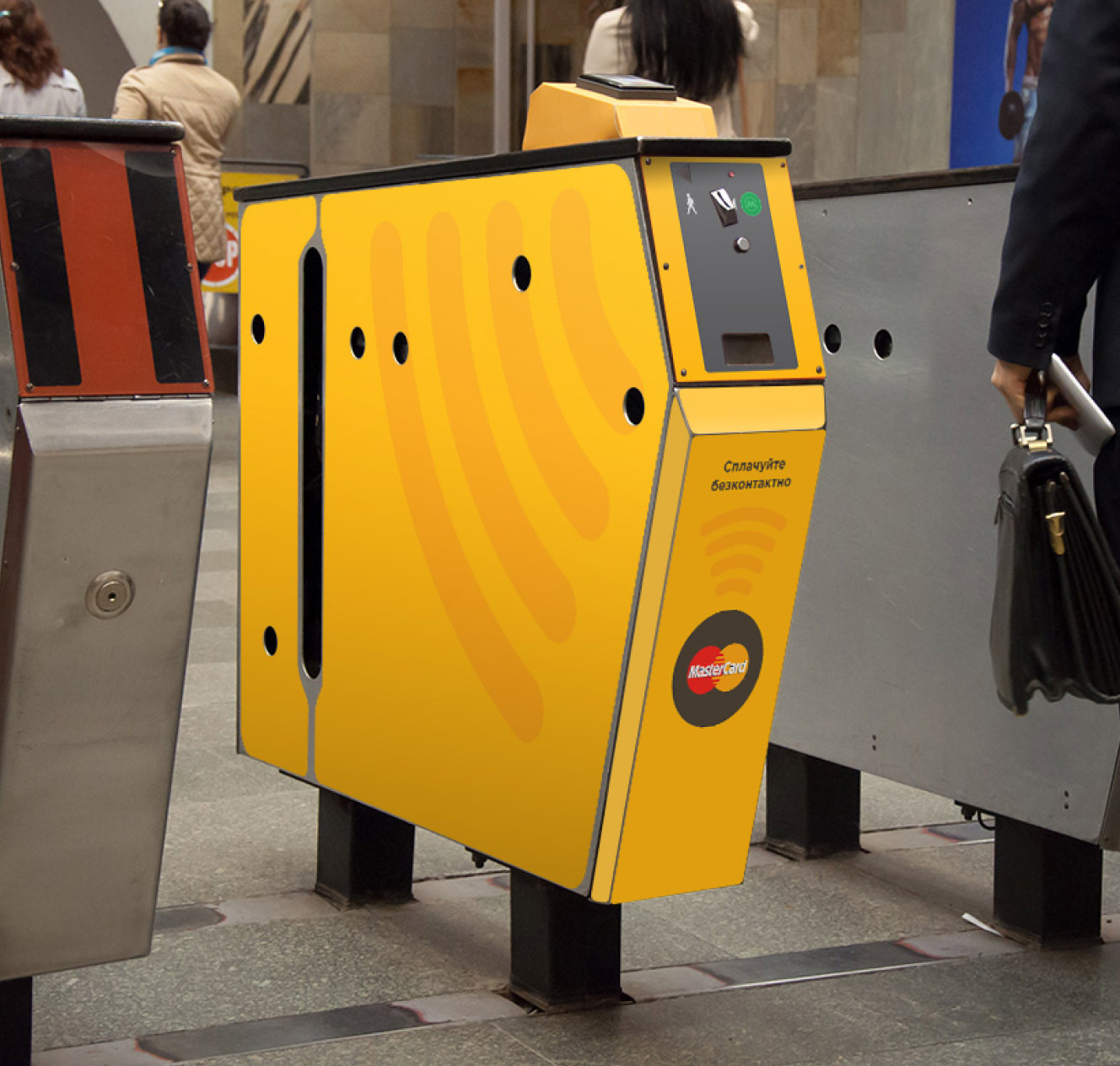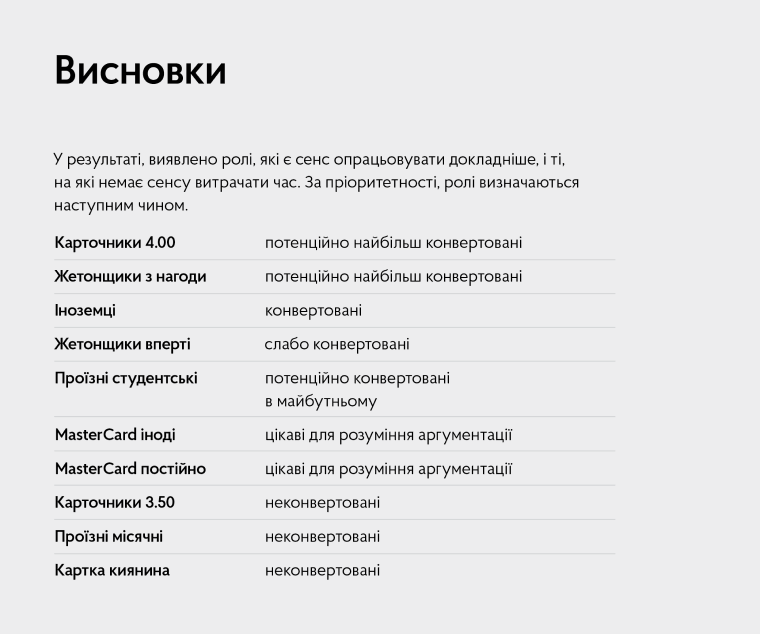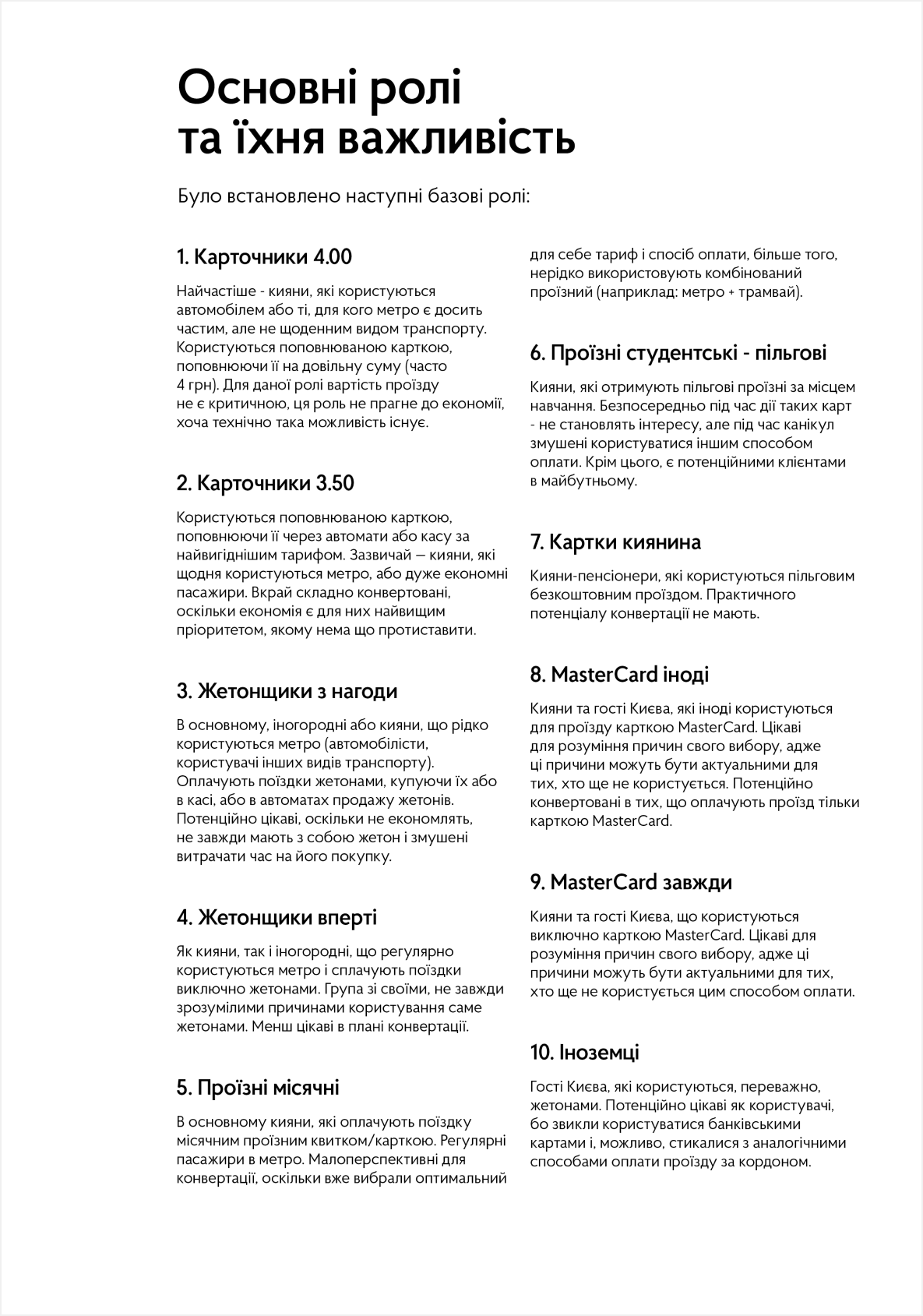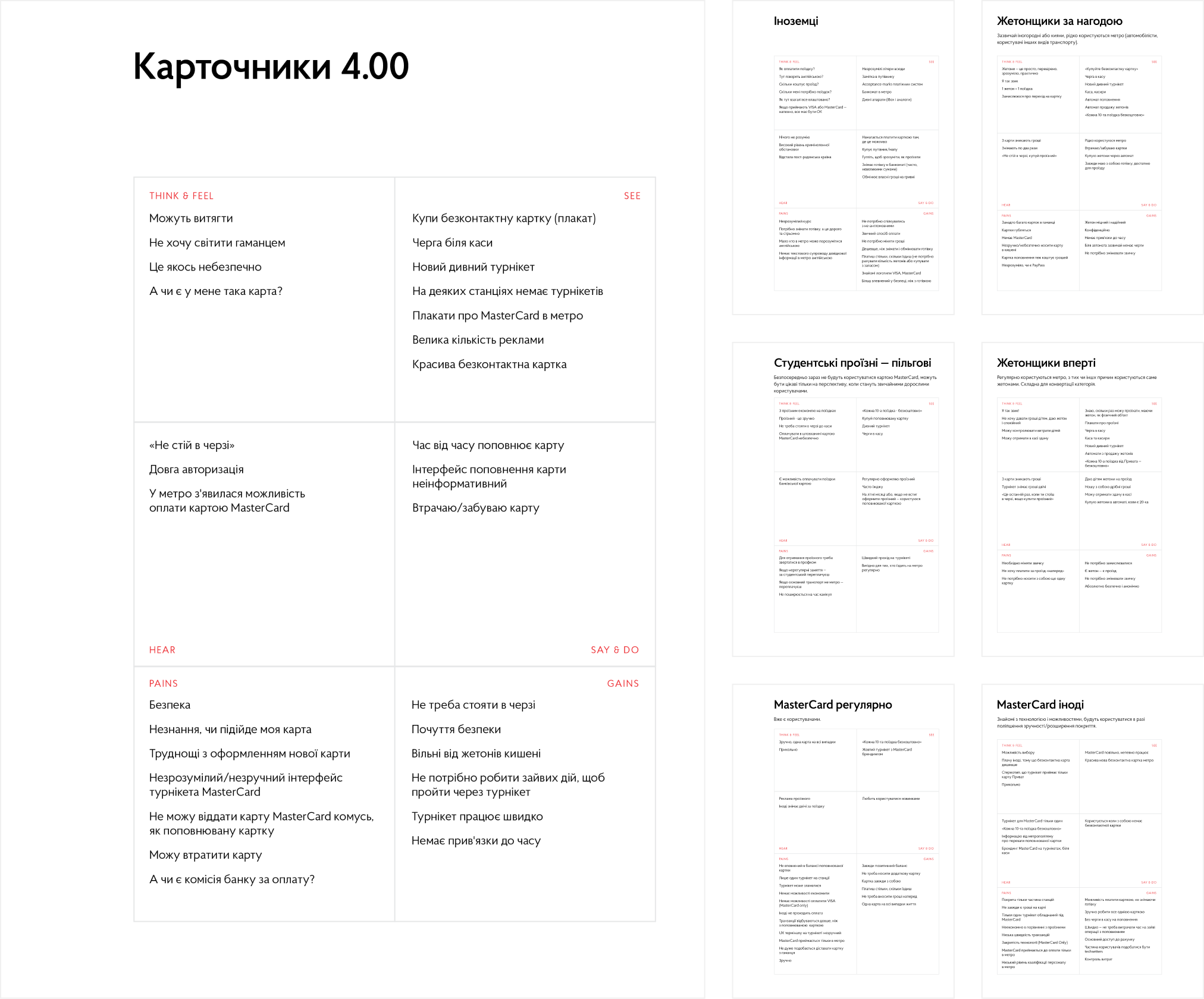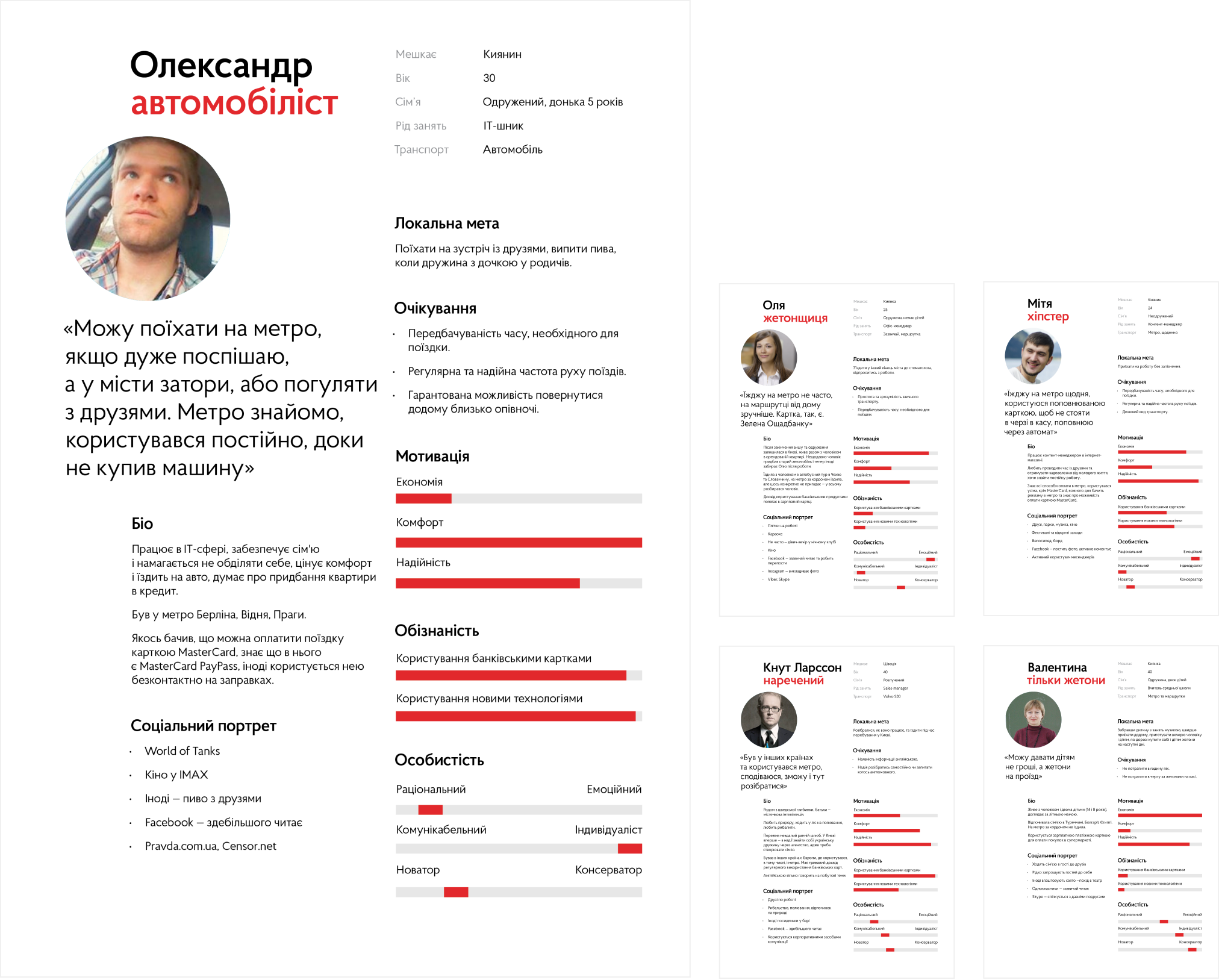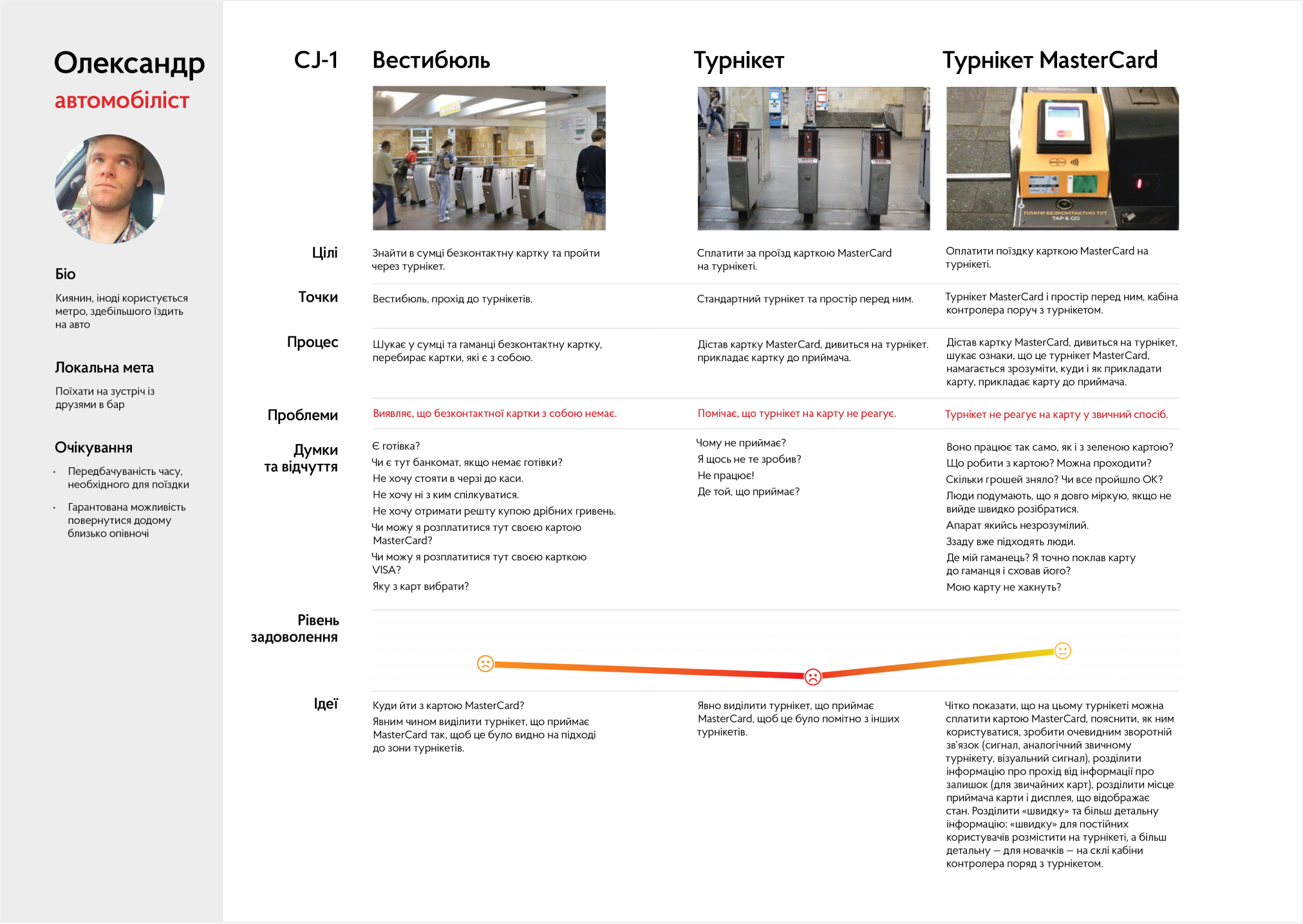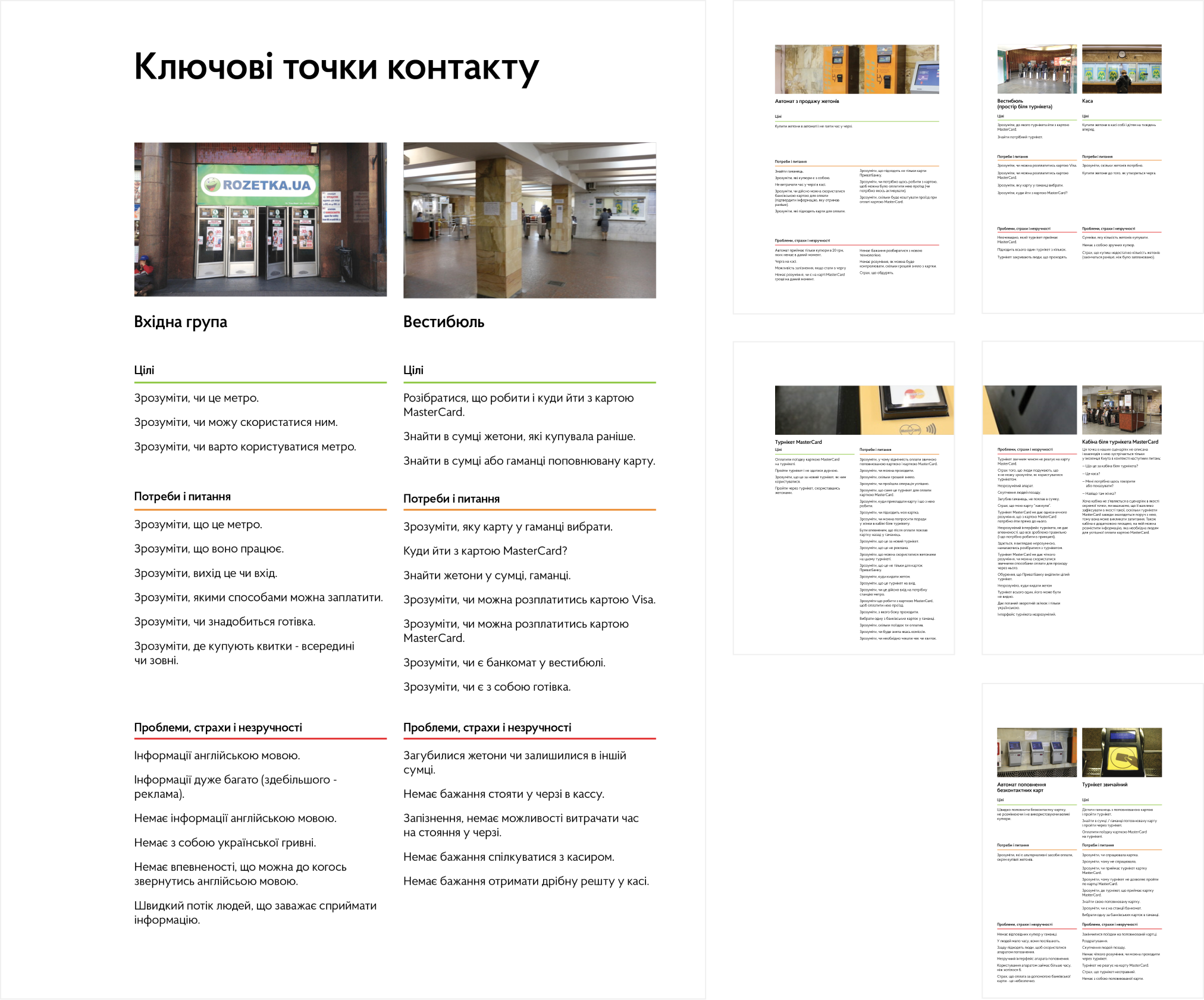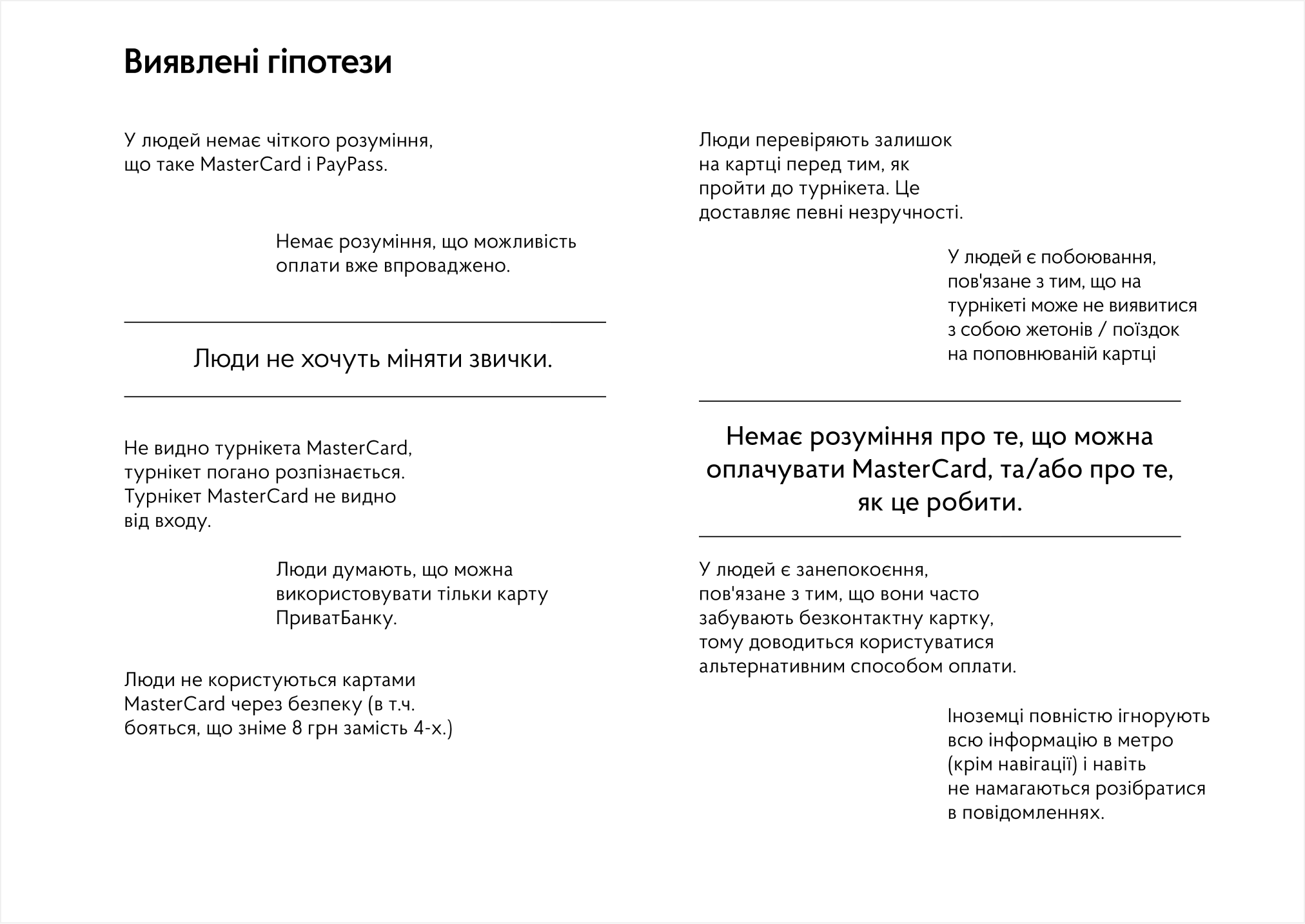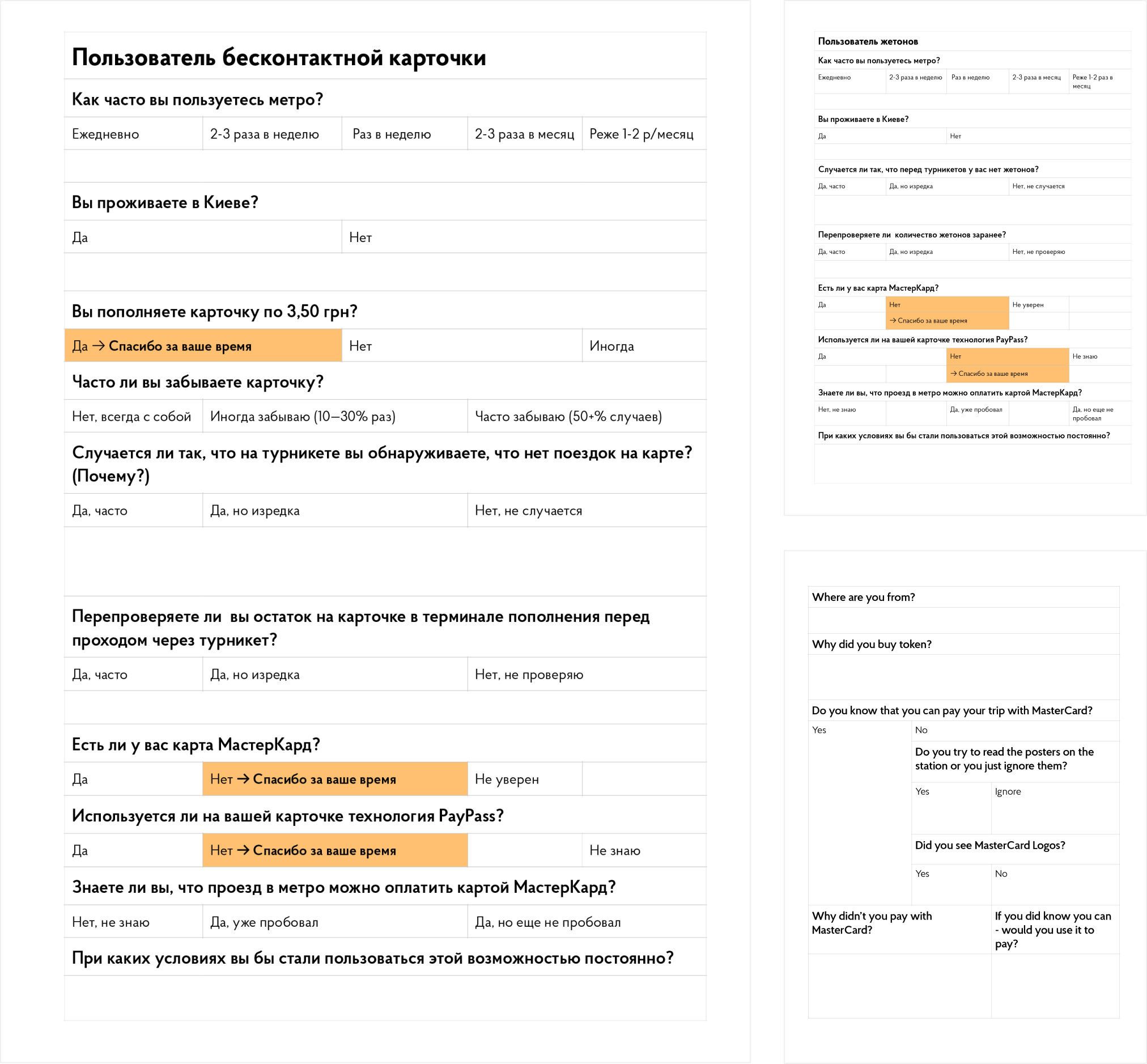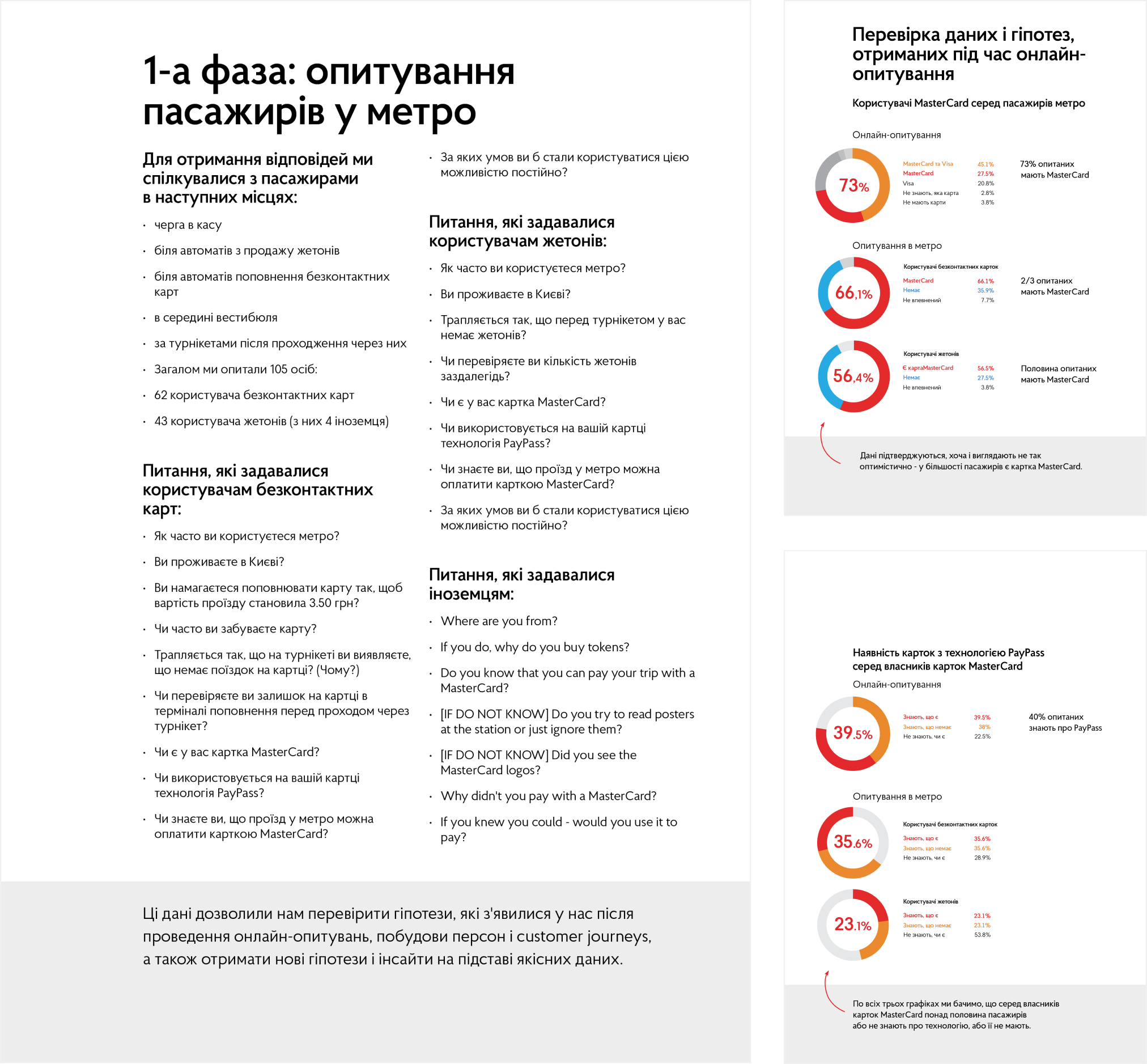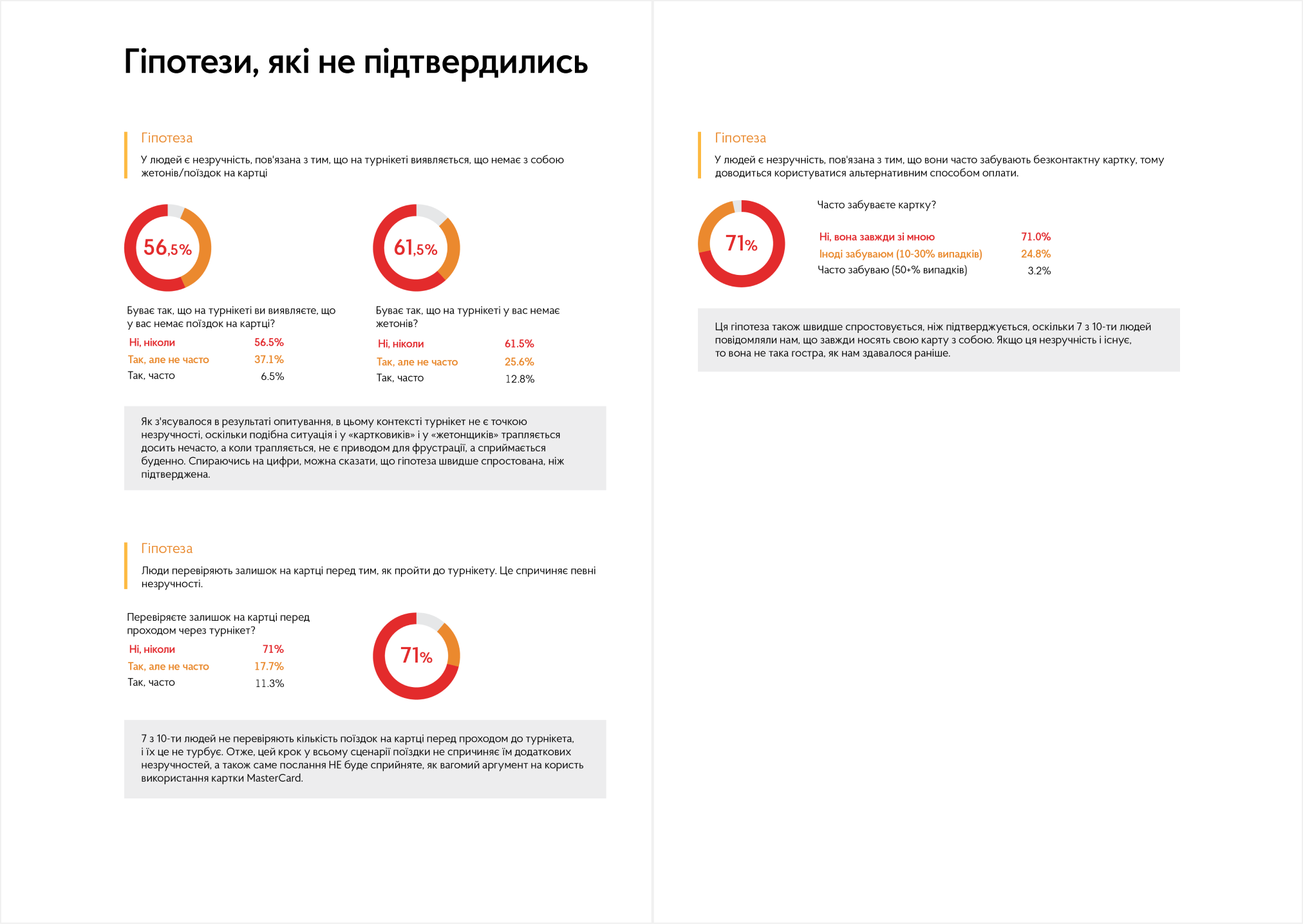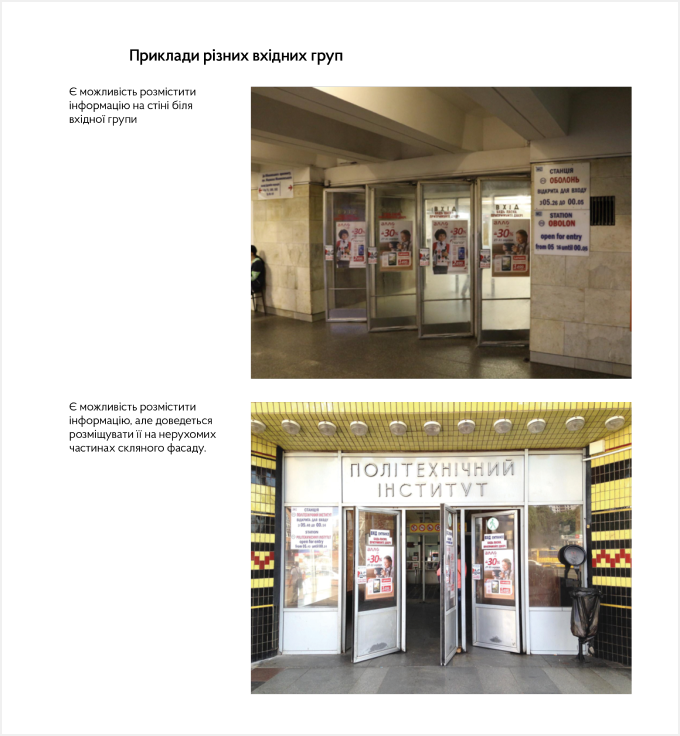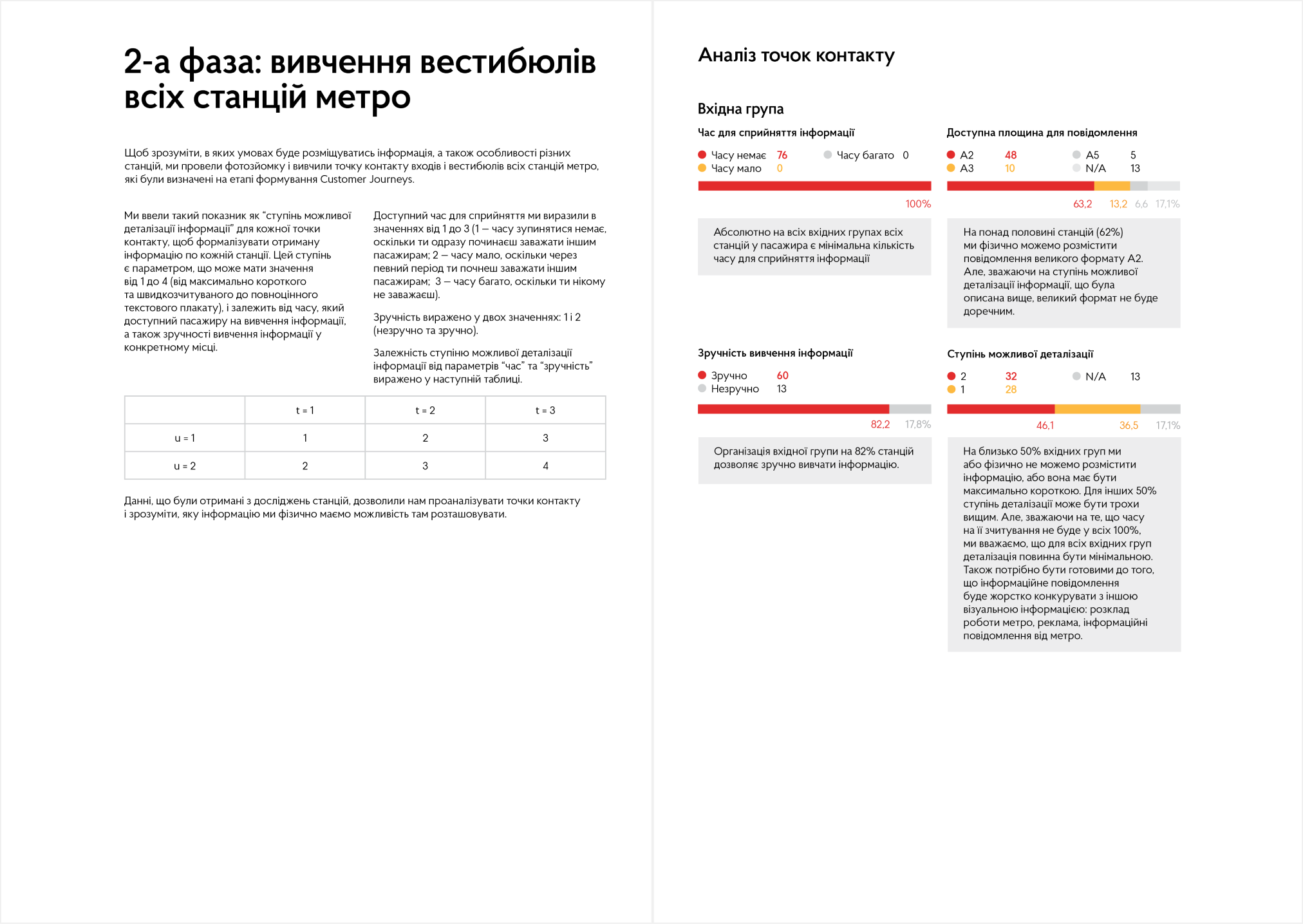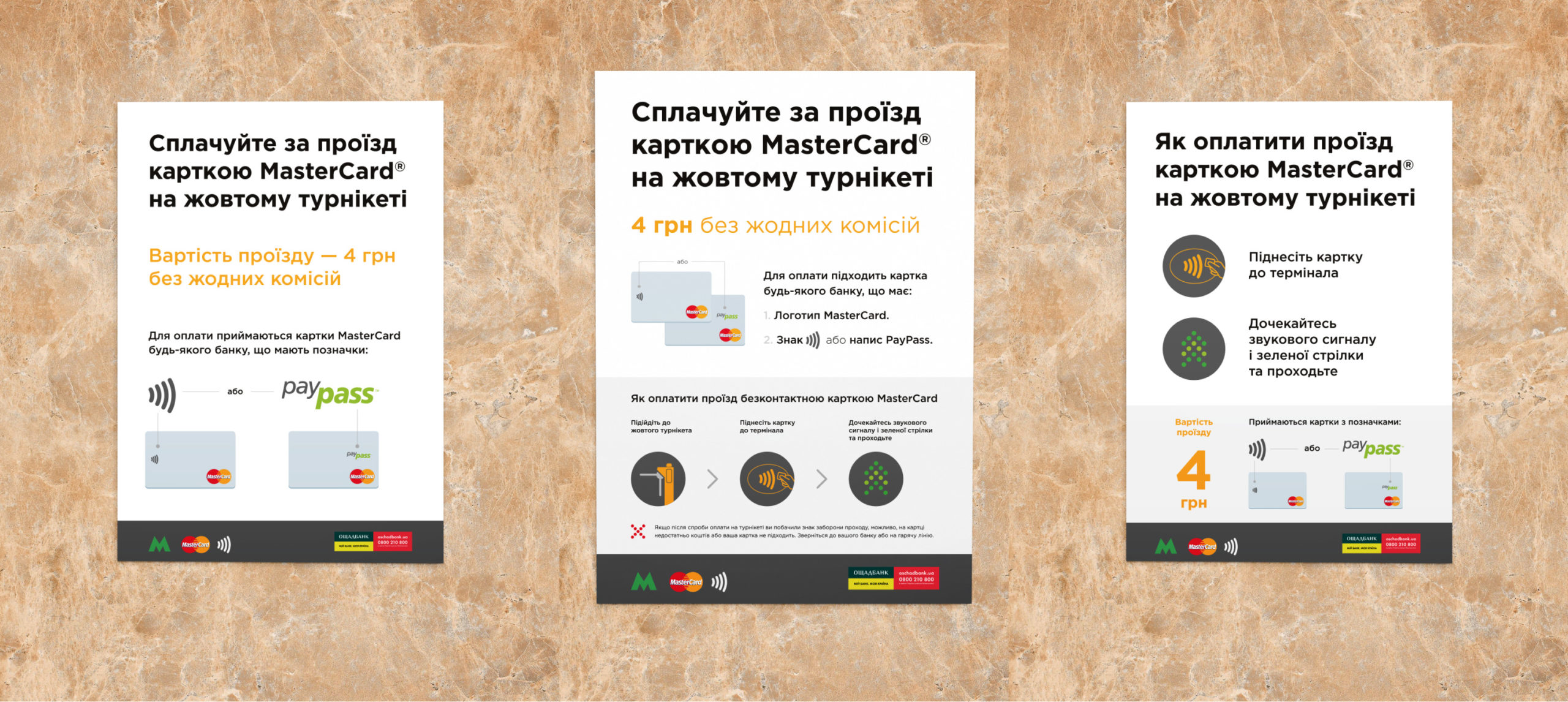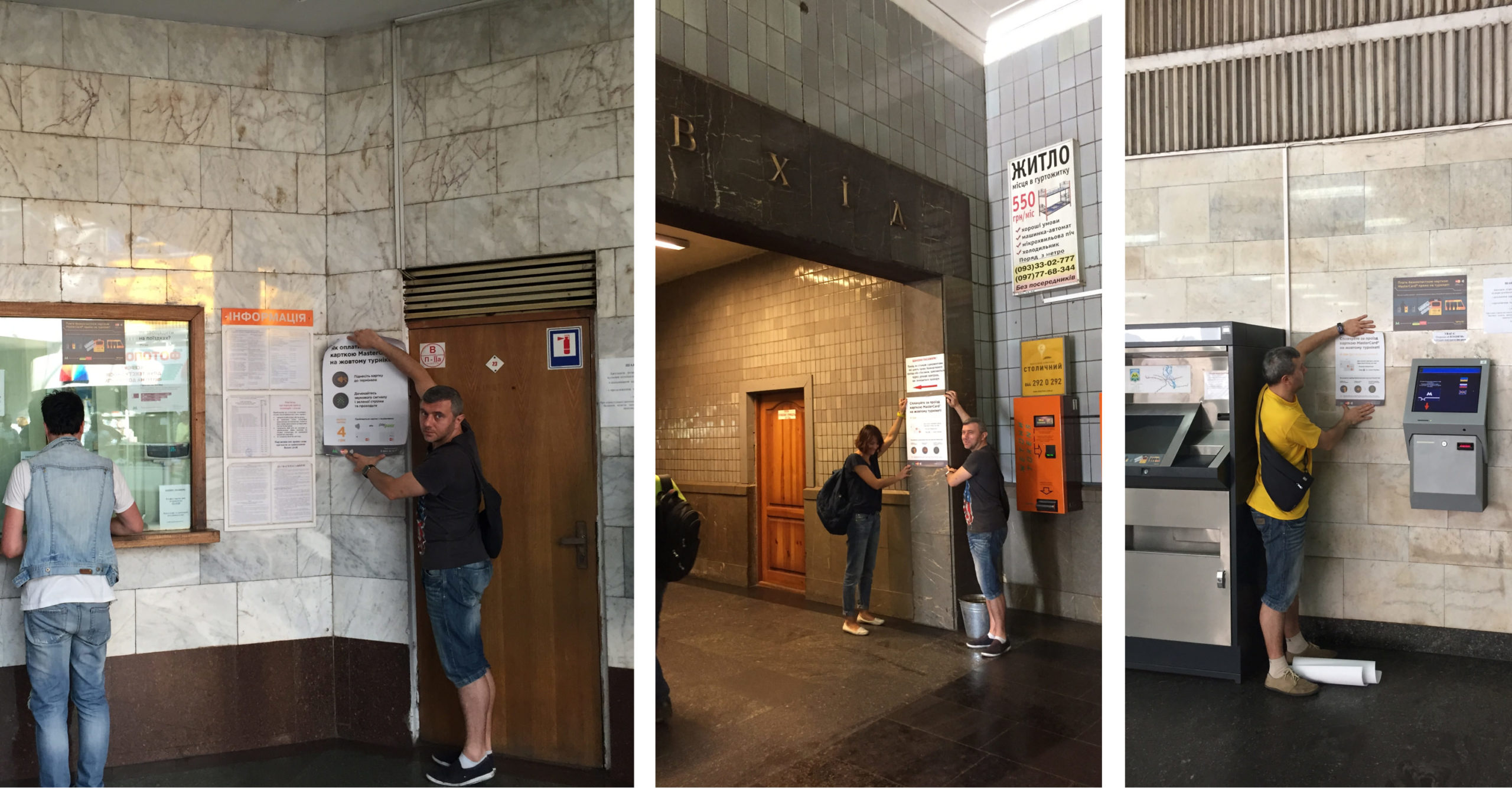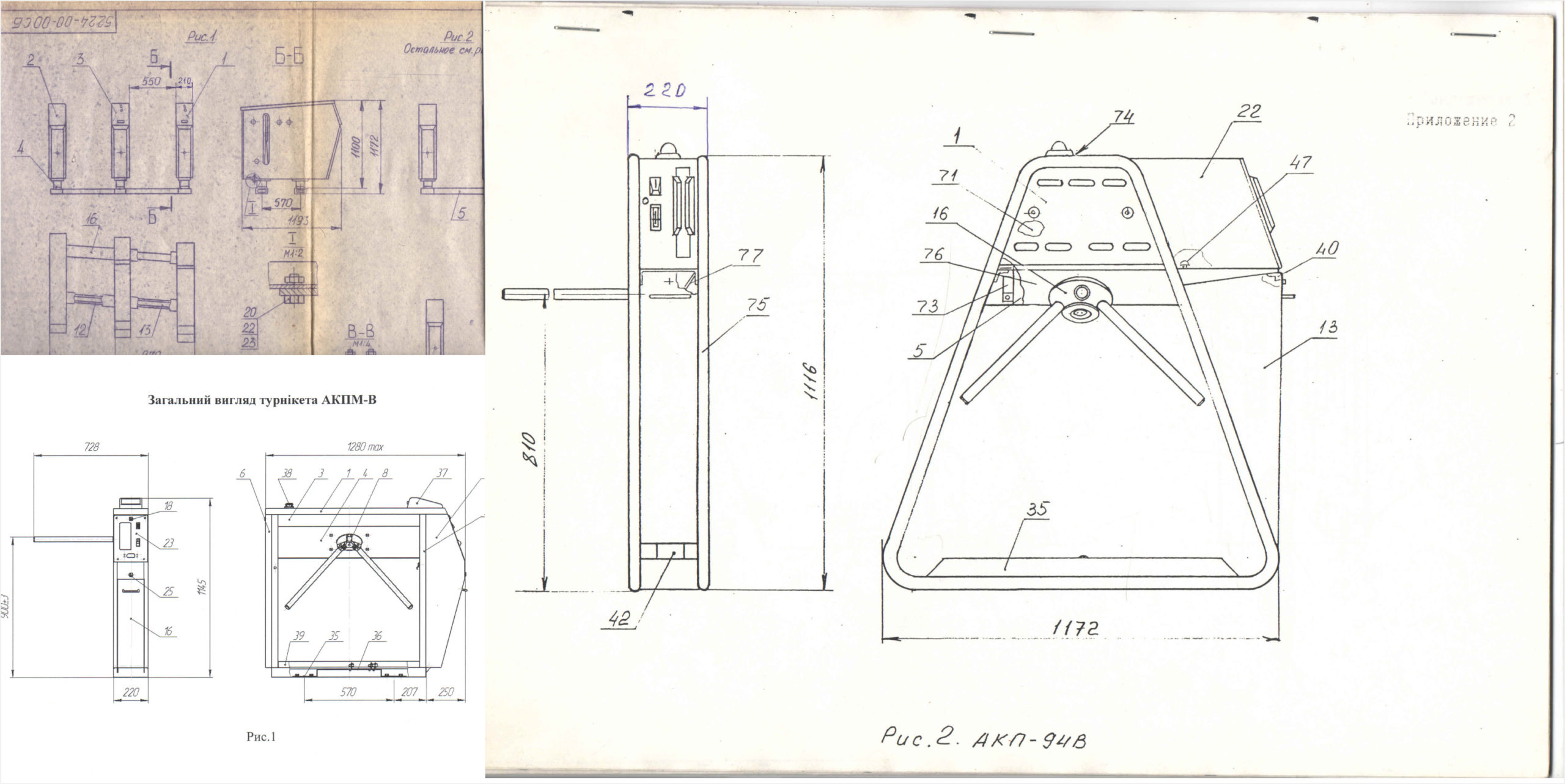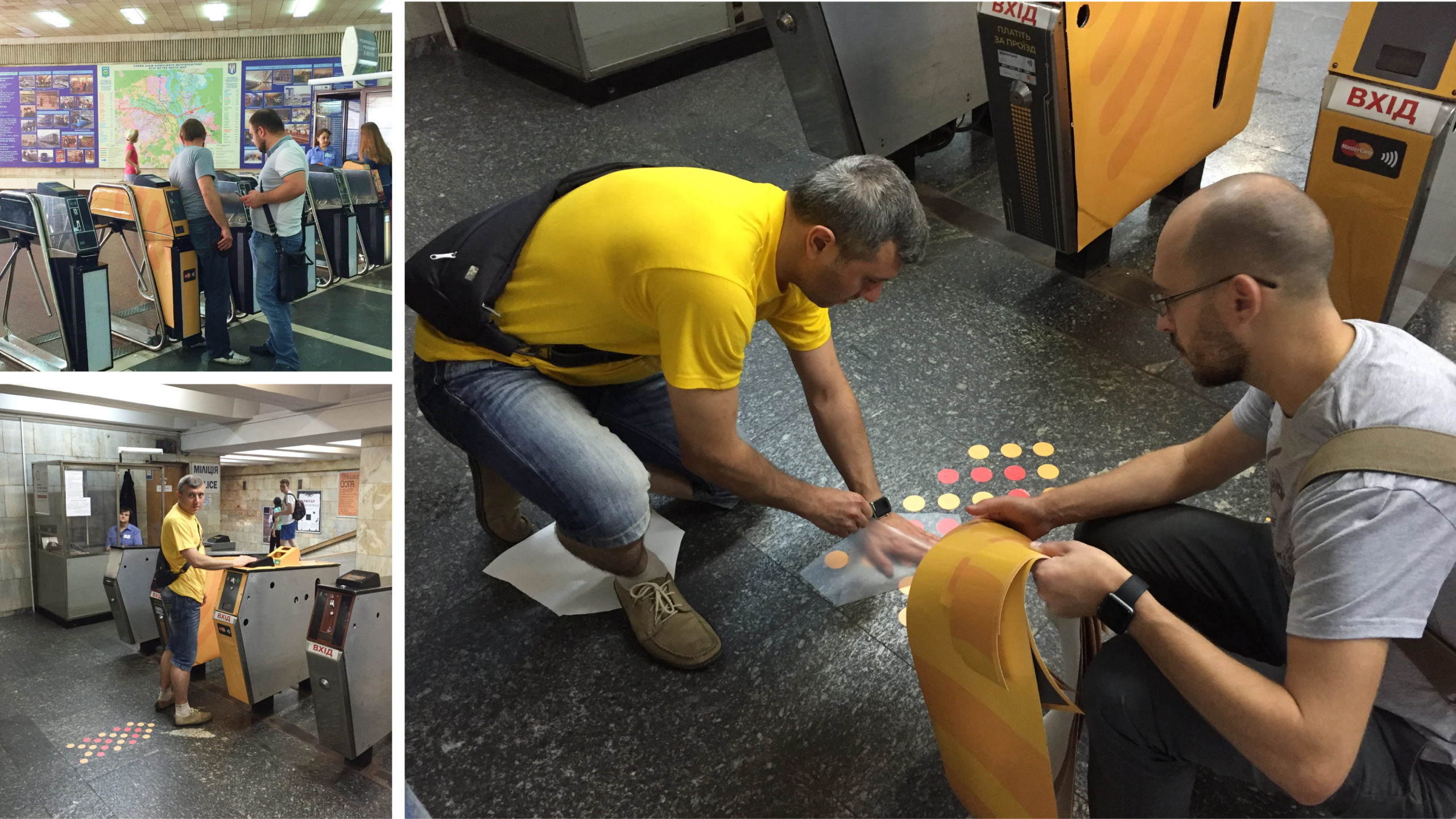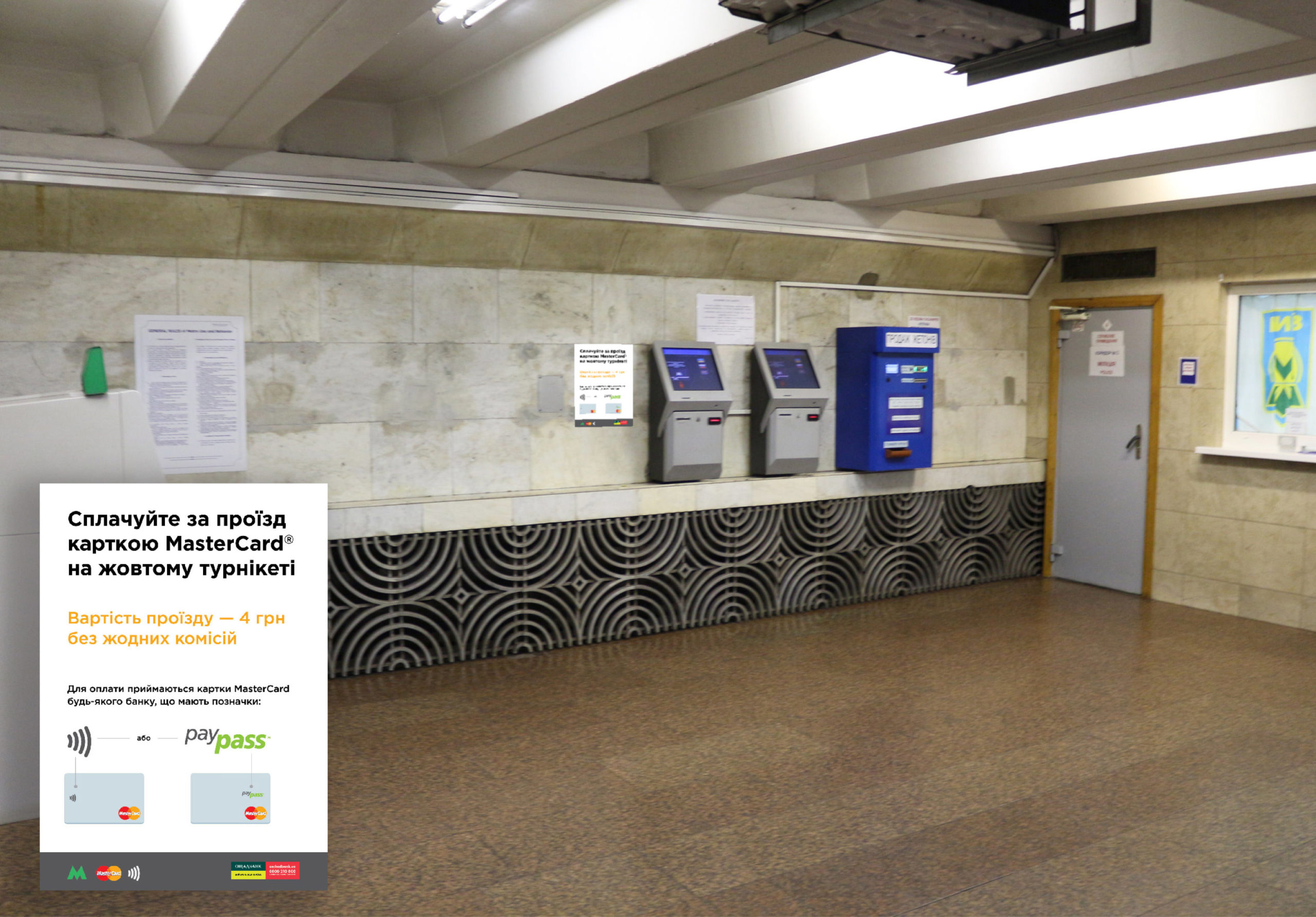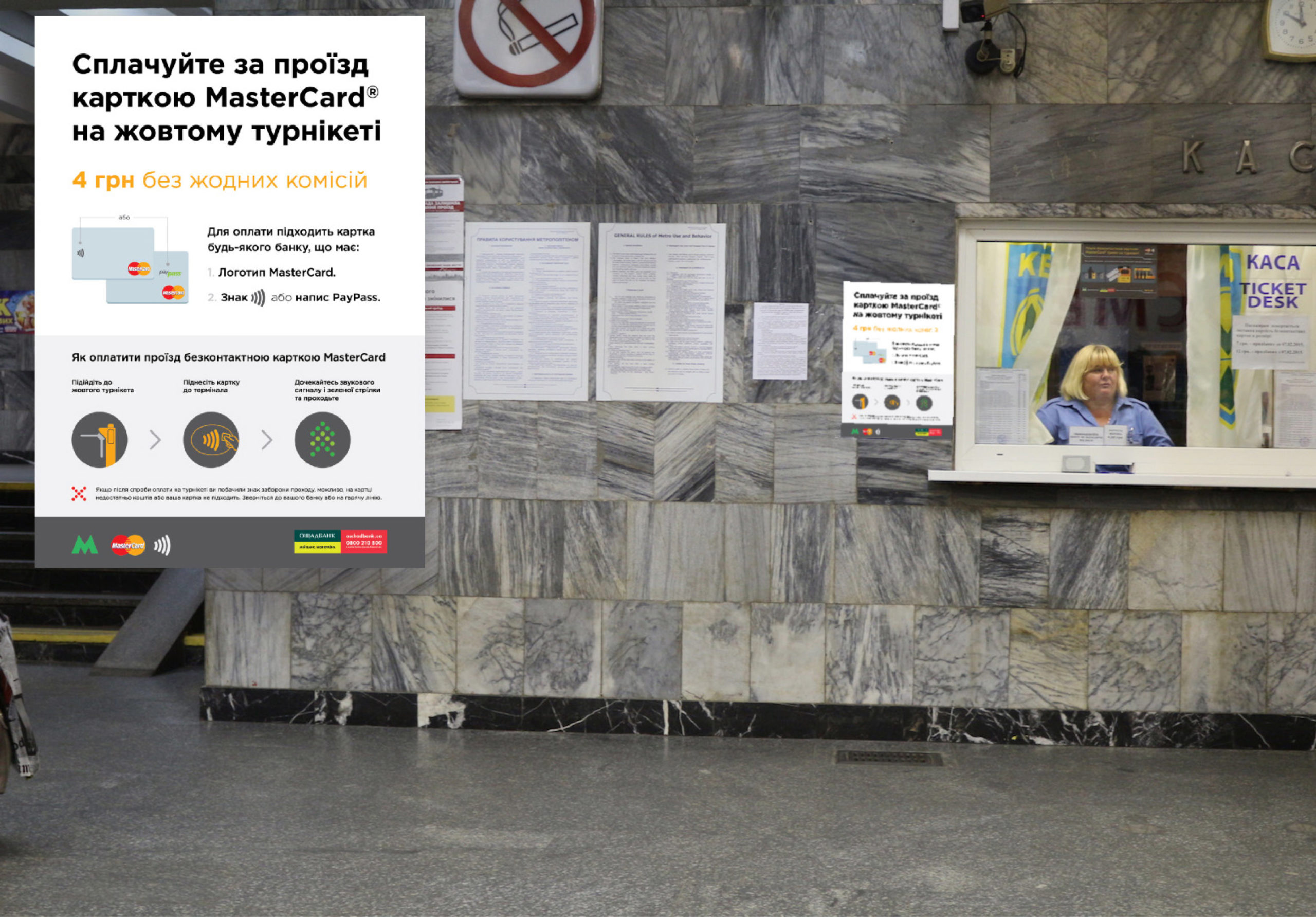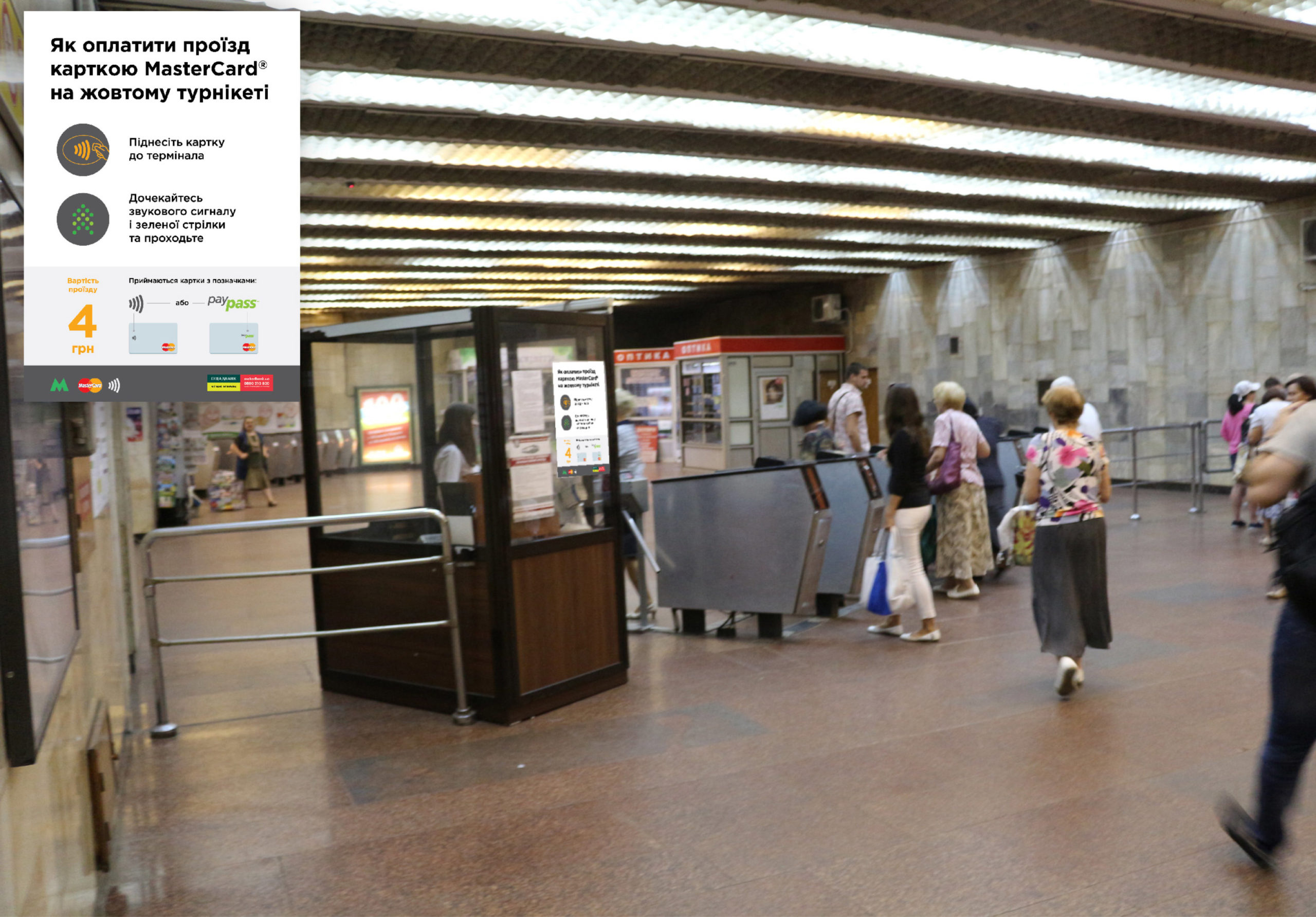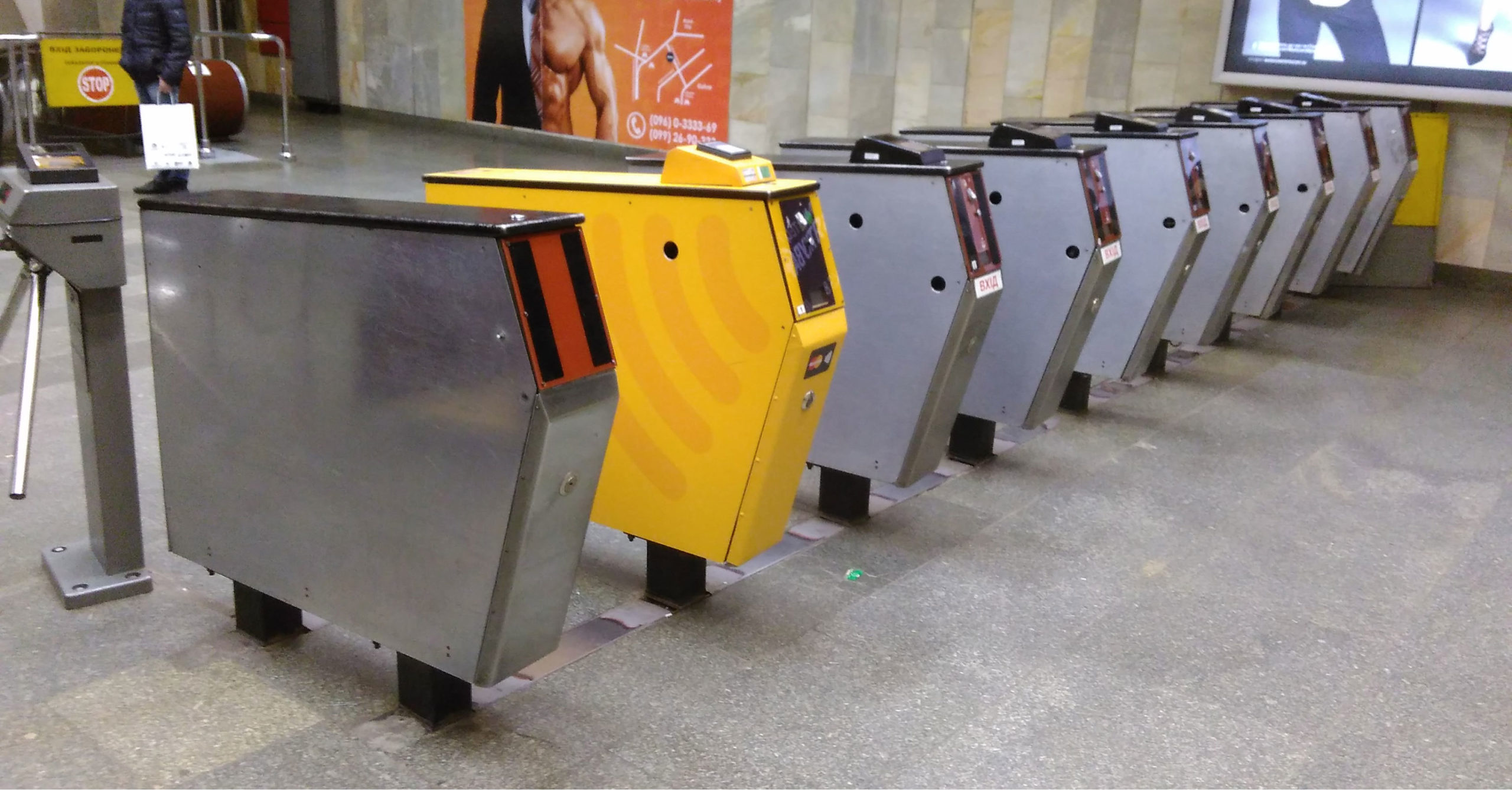Mastercard Contactless Payment in Kyiv Metro
MASTERCARD & KYIV METRO
Mastercard Incorporated is an American multinational financial services corporation.
The Kyiv Metro is a rapid transit system that is the mainstay of Kiev's public transport. Daily ridership - 1.32 million (2016), annual ridership 484.56 million (2016)
PROJECT ROLES
Project Manager, UX/UI Designer
YEAR
2015
PROJECT GOAL
Ordinary people do not orient themselves well in the differences in payment systems and technologies. Not everyone gets used not to pay in cash, but with the bank card, moreover - contactless. In addition, certain myths, stereotypes, and fears that we had to dispel are associated with contactless technology. The project goal was to make contactless payment method useful for everyday metro passengers.
CHALLENGE
The first challenge is the short term. We had about three weeks for planning, business interview, research of all stations, two steps of investigation of users’ experience, identification of users’ types, brainstorming, the composition of posters and design of turnstiles. We had to be in time with developing of communication strategy before the next wave of deployment of terminals at the stations.
Also, the complexity of the project was in a large variety of target audiences. Metro users are millions of people of all ages, income, level of technical and financial literacy.
IMPACT
As a Project Manager leading a multidisciplinary team of designer managed all phases of the project. As a UX/UI designer took part in design activities.
In 2015, after the successful implementation of the project, the adoption of the Mastercard contactless payment system highly increased and become an everyday experience for Kyiv Metro passengers.
ARCHETYPES
The research in this project was made in two directions. First of all, it was necessary to examine the target audience in order to segment millions of passengers according to the several typical roles with similar characteristics - archetypes. The starting point was an online survey. It gave the opportunity to formulate the first hypotheses to motivate the use of certain methods of payment, as well as typical needs, concerns, and stereotypes of passengers.
The following potential archetypes were defined:
- Fare card 4.00UAH – the most potential customer
- Fare card 3.50UAH – non-convertible
- Occasional token – the most potential customer
- Token only – non-convertible
- Monthly fare card – non-convertible
- Subsidized student card – may become customer in the future
- Kyiv resident card – non-convertible
- Occasional Mastercard – important for understanding motivation
- Mastercard only – important for understanding motivation
- Foreigner – potential customer
EMPATHY MAPS
Based on the online survey data, were identified 6 archetypes. By creating empathy maps using the data received during a previous survey we attempted to get a better understanding of what they think and feel, see, hear, say & do, their pains & gains.
PERSONAS
Based on the data received, these archetypes were given details and transformed into personas with their goals, needs, motivation, and personality attributes.
USE CASES
Having personas in mind, we've defined a list of possible use cases for each of our personas.
CUSTOMER JOURNEY MAPS
Use cases were described in the form of customer journeys with identified steps, goals, contact points, issues at these points. It gave the ability to define the major pain point and helped in the ideation of possible solutions.
CONTACT POINTS DISCOVERY
To better understand the issues passengers may face in particular contact point, we've conducted a research, visited and photographed contact points at every metro station.
The goal was to define passengers' goals, needs, and pains from the perspective of a contact point. Further analysis of collected images allowed to identify contact points differences and similarities, classify them.
HYPOTHESES
Based on the data from the online survey and discovery phase we've formulated a set of hypotheses.
SURVEY QUESTIONARY
While these were only hypotheses that we needed to check, update and clarify. For this purpose, we have developed a survey for each role and went to the subway to speak with real passengers while they are in the context of their payment process. Keeping in mind that there are archetypes that have extremely low potential to change their habits (passengers that are purchasing rides at the lowest price possible and people who have no banking cards) we defined "the markers" - questions that allowed to identify these archetypes at the early stage and stop interviewing them.
SURVEY STAGE 1. INTERVIEWING PASSENGERS
This research results gave us a piece of valuable knowledge. It confirmed the hypothesis that a majority of passengers have MasterCard type cards and they have heard about a new option it provides - contactless payment. At the same time, it became clear that the quality of their understanding of this form of payment and payment systems in general needs to be improved. Some respondents have no clear understanding of what Mastercard is, mixed it with Visa, had no idea that they are anyhow different. Some others were thinking that it is a card issued by some particular bank. The most complex task for people was to identify if their card is able to perform contactless payments.
HYPOTHESES THAT FAILED
The survey results provided a better understanding of users' needs as some of the hypotheses have failed. We were considering that passengers use to be frustrated if they find out that they have no tokens or rides on prepaid fare cards right in front of a turnstile or that they use to check fare card balance before going to turnstiles. It was one of the initial pains that we were considering to fix with design.
According to the results we've recieved - only 6.5% of responders occasionally face it. Only 3.2% of responders may occasionally forger their fare cards at home. Only 11.3% of responders care about the number of rides they have on their fare card balance.
The responses by the majority of passengers interviewed showed that even in case they are facing these issues - it doesn't frustrate them.
SURVEY STAGE 2. STUDYING THE LOBBIES
During the second stage of the survey, we had to study all the lobbies of all subway stations to understand their differences. We took pictures of 73 lobbies at 52 stations. This was necessary in order to understand where and what information can be placed. We had to analyze all the contact points that we described in customer journeys for all stations. To systematize the data, we introduced an index of “the reasonable level of information details” that is acceptable for each point of the contact, which depended on the availability of discovering the information and time passengers have for its perception at these points. The index may have values from "1" to "4" where "1" means the smallest piece of information that a passenger is able to perceive almost "on the run" / from a large distance while "4" means the ability to read from a close distance while having time for that.
POSTERS DESIGN
Taking into account the results of the survey of passengers, we decided not to mention benefits of Mastercard contactless payment system, but address people needs by providing the most important information about this method of payment in the subway:
- Now you can pay your fare straight with your banking card;
- Which cards have this feature;
- Where and how to pay with the card;
- How much is the fare, and whether there is a fee;
- Do you need to activate the card in any way?
- Who to ask questions if any.
The posters that clearly address users’ needs instead of promoting some brand or feature met one of the initial constraints that we set ourselves at the beginning of the project: our design is not an advertisement and should not be considered as an advertisement.
TESTING POSTER DESIGNS
The designs were tested in real conditions to check for visibility in different lighting conditions. It helped in further recommendations of the best spots for their placement.
THE NEXT CHALLENGE
While working on posters design, we were facing another challenge - the turnstiles itself. It's hard to communicate to passengers that they can use their Mastercard cards to pay contactless using a specific turnstile without being able to define that particular turnstile. The issue with them was that they were... totally different. There were 4 different types of turnstiles.
ANOTHER CHALLENGE
We were looking for a way to identify a unique feature that could characterize contactless turnstiles. It should have been an unused feature, easy to implement on devices of various designs. It should be easy to identify, simple and unambiguous to the passengers. Ideally - defined in one word. And we found the word.
IT'S 'YELLOW'
With "yellow" as a concept, we were able to get rid of the euphuistic and ambiguous language that could confuse passengers. It was now possible to indicate the desired turnstile in posters and the personal communication of the controller with passengers using just a single word.
Having slightly surprised MasterCard and Metro with this obvious idea, we developed a design for the design of the "yellow" turnstile.
Since we also had to take into account the needs of passengers who use other payment methods, we developed a design that displays payment information using tokens and contactless metro cards, which this turnstile also accepts.
TESTING TURNSTILE DESIGNS
While testing a new design on real turnstiles, we have noticed that passengers aren't always able to see through the intense people traffic which one of the turnstiles accepts contactless payment.
We decided to paint yellow the wall of the nearby turnstile, too. So we created a “yellow corridor” to make it clearer for passengers on which side of the payment kiosk machine they can go through a turnstile. "Arrows" made of red & yellow "Mastercard" roundels were added as an additional indication of the turnstile placement.
THE FINAL POSTER DESIGN
"Informational Poster" with a placement recommendations.
THE FINAL POSTER DESIGN
"Educational Poster" with a placement recommendations.
THE FINAL POSTER DESIGN
"Guiding Poster" with a placement recommendations.
THE 'YELLOW' TURNSTILE
The roundels on the floor worn out over time, but there is no longer any need for them - passengers are well aware of which turnstile you can pay contactlessly.
